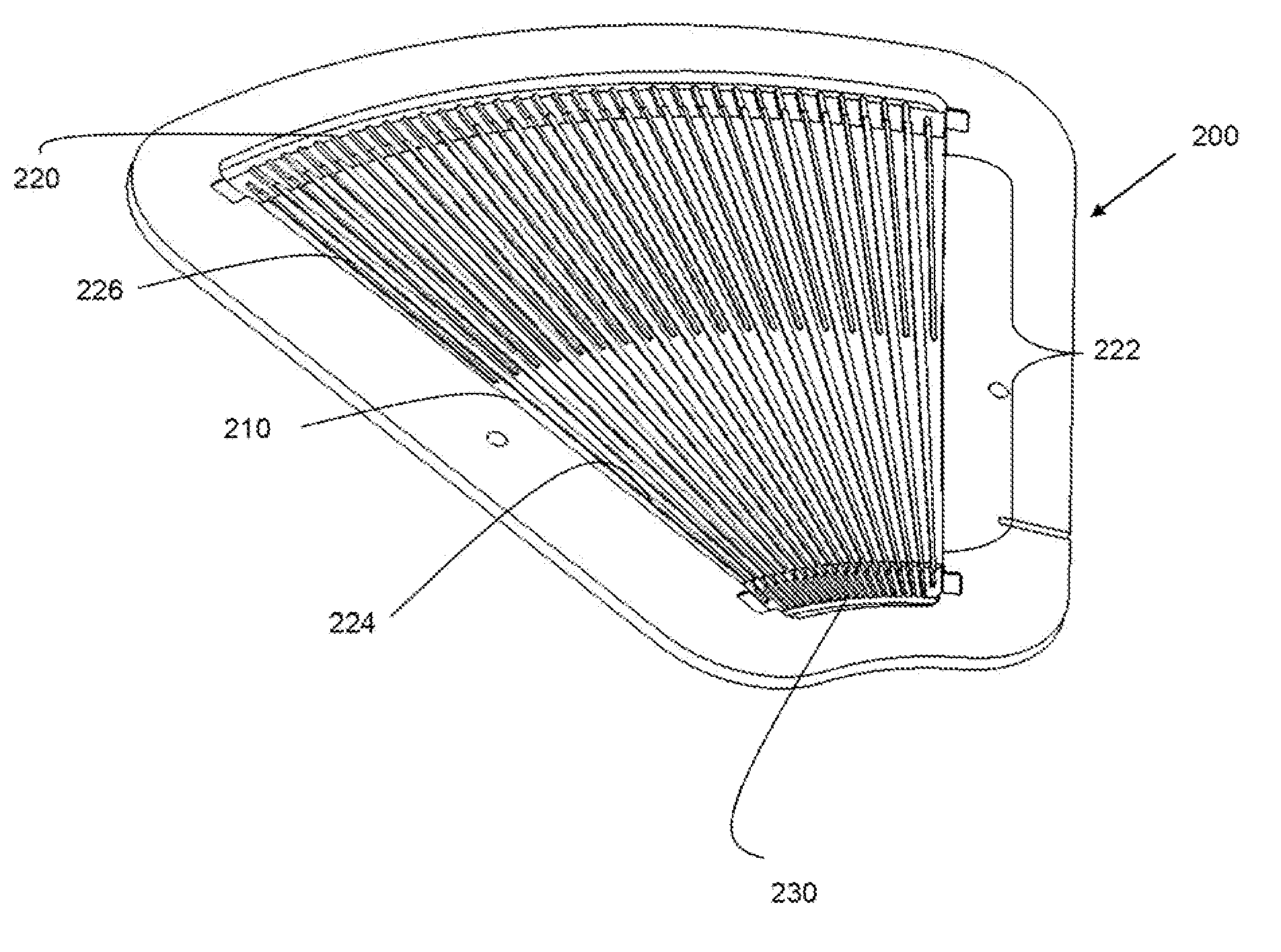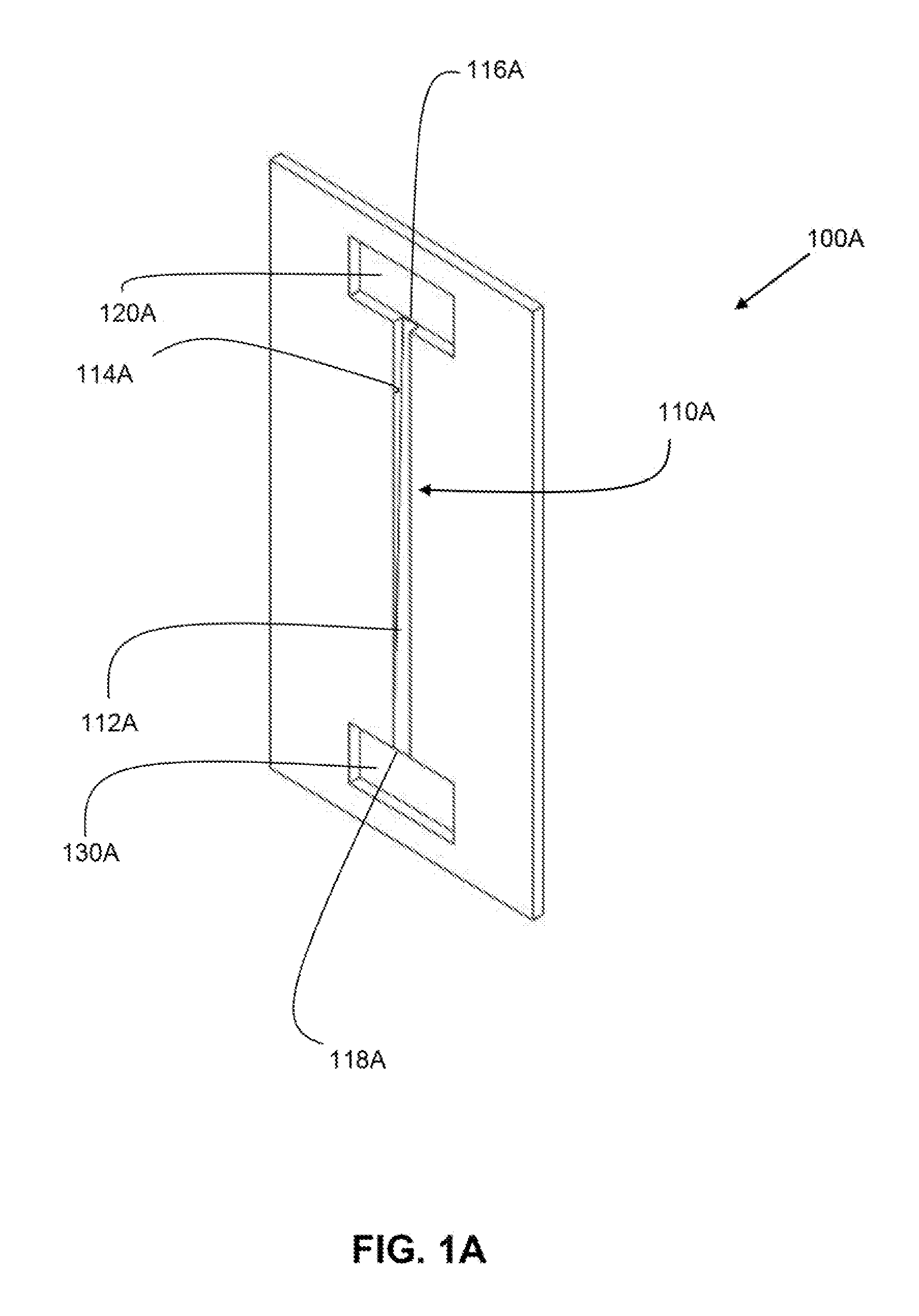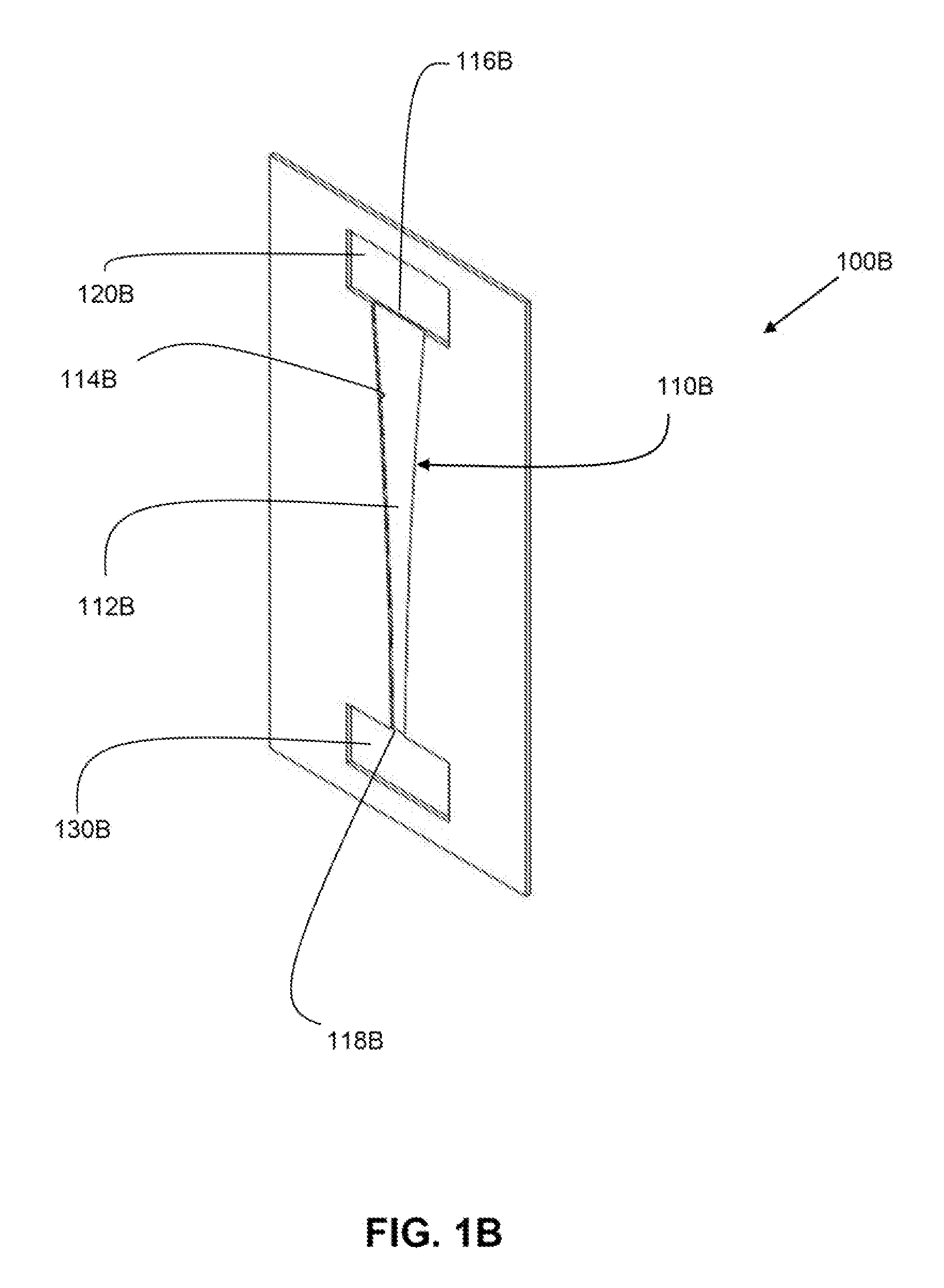Fuel Cell Flow Channels and Flow Fields
a flow channel and fuel cell technology, applied in the field of fuel cells, can solve the problems of reduced performance, depletion of oxygen content in the air stream, and drop in air pressure, and achieve the effect of uniform current density
- Summary
- Abstract
- Description
- Claims
- Application Information
AI Technical Summary
Benefits of technology
Problems solved by technology
Method used
Image
Examples
Embodiment Construction
)
Anode Flow Channels—for Fuel Cell Operation on Pure or Dilute Fuel
[0059]According to one embodiment, an anode flow field channel for a PEM fuel cell is designed for maintaining substantially constant fuel availability for the fuel cell electrochemical reaction along at least a portion of the length of the channel, for a given channel length and fuel stoichiometry, when the fuel cell is operating on either a pure or a dilute fuel stream.
[0060]We theorize that fuel availability is proportionate to fuel cell performance, and that uniform fuel availability promotes uniform current density, which is desirable for efficient fuel cell operation and improved performance. In the equations and description below, the fuel referred to is hydrogen, although the description would be applicable to other fuels such as methanol (although the value of the constant would change).
[0061]Hydrogen availability is a function of hydrogen mass flow and velocity, and is defined as follows:
AVAILH2(x)=m.H2(x)v...
PUM
 Login to View More
Login to View More Abstract
Description
Claims
Application Information
 Login to View More
Login to View More - R&D
- Intellectual Property
- Life Sciences
- Materials
- Tech Scout
- Unparalleled Data Quality
- Higher Quality Content
- 60% Fewer Hallucinations
Browse by: Latest US Patents, China's latest patents, Technical Efficacy Thesaurus, Application Domain, Technology Topic, Popular Technical Reports.
© 2025 PatSnap. All rights reserved.Legal|Privacy policy|Modern Slavery Act Transparency Statement|Sitemap|About US| Contact US: help@patsnap.com



